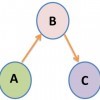Abstract
Brokerage occurs constantly in our daily lives. You, an Extension educator, want to deliver a financial management program in two neighborhoods, A and B. Neighborhood A needs help immediately, but you have no connections there. You do have connections in the other neighborhood, and you know that a family in Neighborhood A has friends in Neighborhood B. In this example, the Neighborhood A family can be a broker to help you deliver a program in Neighborhood B. Extension educators can use brokerage typology to understand how information and resources flow among their target audiences, and by identifying the brokers in their local communities, to increase the connectedness of communities and expand the reach of Extension programs to a larger population. This 4-page fact sheet was written by Anil Kumar Chaudhary and Laura A. Warner, and published by the UF Department of Agricultural Education and Communication, March 2015.
AEC535/WC197: Introduction to Social Network Research: Brokerage Typology? (ufl.edu)
References
Fernandez, R. M., & Gould, R. V. (1994). A dilemma of state power: Brokerage and influence in the national health policy domain. American Journal of Sociology, 99(6), 1455-1491. https://doi.org/10.1086/230451
Gould, R. V., & Fernandez, R. M. (1989). Structures of mediation: A formal approach to brokerage in transaction networks. Sociological Methodology, 19, 89-126. https://doi.org/10.2307/270949
Kumar Chaudhary, A. (2014). Diversity and reach of Penn State Extension programs and effect of brokerage and network position on extension program outcomes through Social Network Analysis (SNA) (Unpublished master's thesis). The Pennsylvania State University, State College, PA.
Stovel, K., Golub, B., & Milgrom, E. M. M. (2011). Stabilizing brokerage. Proceedings of the National Academy of Sciences, 108 (Supplement 4), 21326-21332. https://doi.org/10.1073/pnas.1100920108
Stovel, K., & Shaw, L. (2013). Brokerage. Annual Review of Sociology, 38, 139-158. https://doi.org/10.1146/annurev-soc-081309-150054
Yin, X., Wu, J., & Tsai, W. (2012). When unconnected others connect: Does degree of brokerage persist after the formation of a multipartner alliance? Organization Science, 23(6), 1682-1699. https://doi.org/10.1287/orsc.1110.0711


